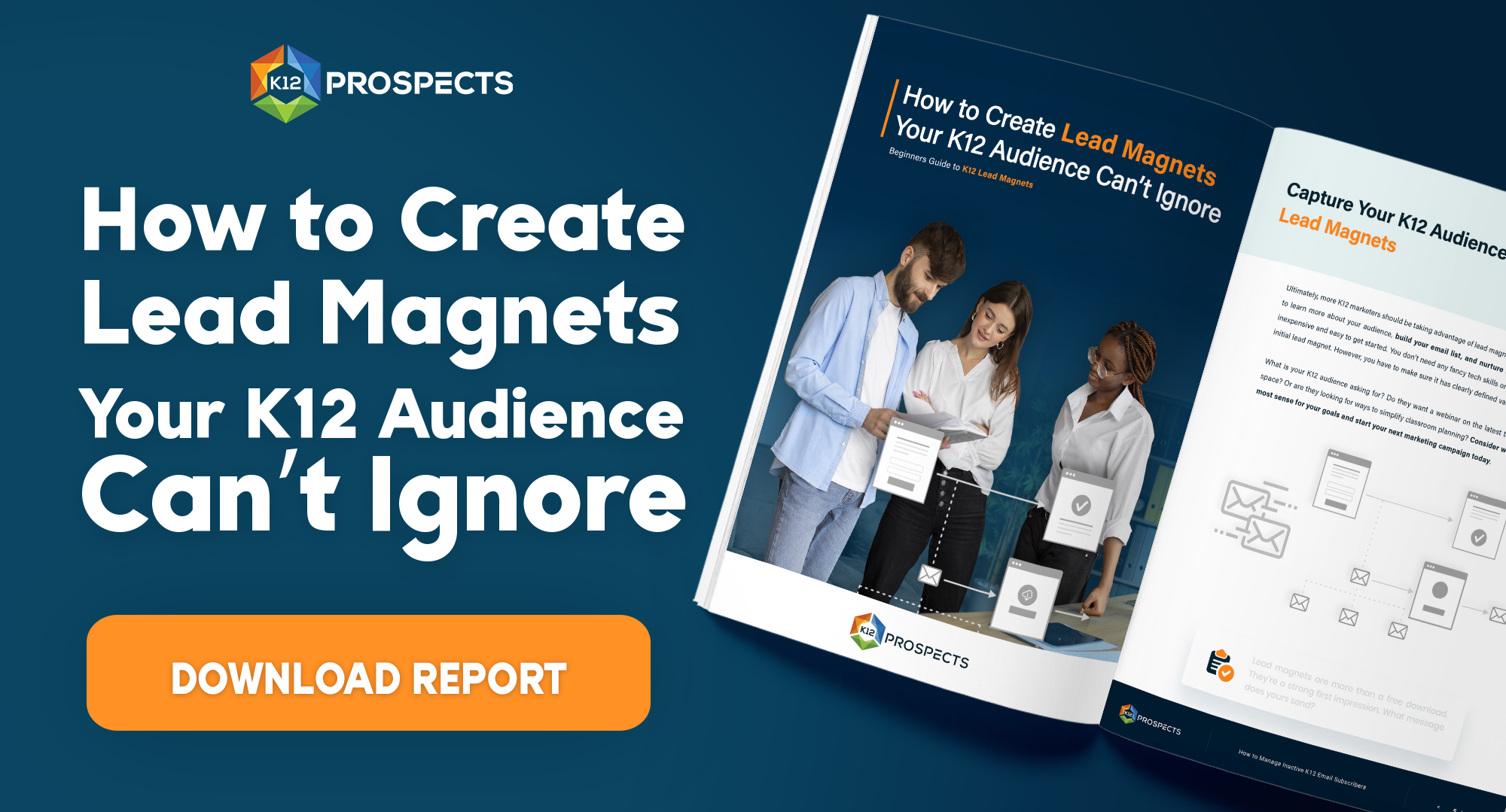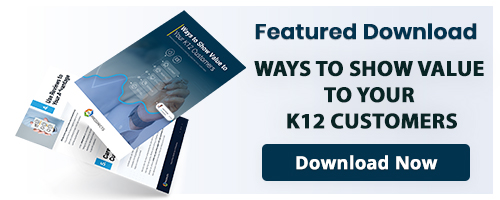How to Create Lead Magnets Your K12 Audience Can’t Ignore

While K12 marketers need to focus on getting traffic to their website, your efforts don’t stop here. You could have all the traffic in the world, but without conversions, what’s the point? If you want to generate powerful leads, you need the right strategy. This is why it’s important to understand how to create lead magnets your K12 audience can’t ignore.
Lead magnets aren’t a new concept, but they’re not always used the right way. Essentially, a lead magnet is when you give something for free (content, educational tools, download, etc.) in exchange for an email address. From there, you can launch a targeted K12 email marketing campaign to build trust.
However, as most marketers quickly learn, you can’t throw together a lead magnet in a few minutes and expect it to work like magic. With a reported 50% of marketers already using lead magnets to capture emails, follow these tips to create lead magnets your K12 audience can’t help but love.
How Do Lead Magnets Work?
First, how exactly do lead magnets work? It comes down to a concept most people are already familiar with: free value. Who doesn’t love a free gift? This is backed by psychological research, and it’s known as the zero-price effect. When you share something for free, your audience is tempted to part with their information (ie. their email address) because they perceive this download/freebie as valuable.
What types of lead magnets can you create for your K12 audience?
- Ebooks
- Downloadable guides
- Templates
- Webinars
- Research or stats
- Email course
- Trends review
- Free trial
While K12 educators and administrators aren’t usually open to sharing personal information like their phone or email, they’re much more likely to do so when they see this as an equal exchange. A lead magnet is something a person would be willing to pay money for, making it more valuable. With over half of all marketers who use lead magnets reporting higher conversion rates, this strategy pays off.
How to Create K12 Lead Magnets
Before you begin, make sure you know how to create K12 lead magnets that actually convert. These can take a lot of time to create, so you don’t want to waste that effort on something your audience doesn’t want. Instead, focus on these key points:
Know what your audience wants.
To start, make sure you know what your audience really wants. Don’t make assumptions, but actually focus on surveys and statistics. Not sure what your K12 audience is looking for? Ask them. Consider your most engaging content in the past, and build upon that. You don’t have to reinvent the wheel.
Use audience feedback.
From there, make sure you’re using your audience’s feedback to hone in on your lead magnet. Soliciting feedback through email, social media, and so on is another great way to learn from your current users. For instance, you might have a calendar lead magnet that helps teachers organize their planning schedules. A survey about specific seasonal concerns to current teachers is a great way to understand how to present this calendar.
Specify your value.
If the value of your lead magnet isn’t clear, you can’t expect your K12 audience to take action. Much of this comes down to using the right language. Compare these two examples: “Clean your classroom” vs. “Flu-proof your classroom with this 5-minute process backed by research.” Which are you more likely to choose? Most are likely to act after reading the latter since it clearly defines its value in a way that’s engaging.
Focus on quality.
Lastly, your lead magnet needs to be high-quality and memorable. Your freebie is only the first step in your sales funnel. Your end goal is to convert these users to paying customers. They won’t take any next steps if your lead magnet is poorly designed, low-quality, and full of typos. Make sure you’re offering a high-quality, engaging lead magnet that builds real-world trust.
Capture Your K12 Audience Through Lead Magnets
Ultimately, more K12 marketers should be taking advantage of lead magnets. This is the best way to learn more about your audience, build your email list, and nurture leads. In addition, it’s inexpensive and easy to get started. You don’t need any fancy tech skills or graphics to build an initial lead magnet. However, you have to make sure it has clearly defined value and worth.
What is your K12 audience asking for? Do they want a webinar on the latest trends in the K12 space? Or are they looking for ways to simplify classroom planning? Consider what makes the most sense for your goals and start your next marketing campaign today.



